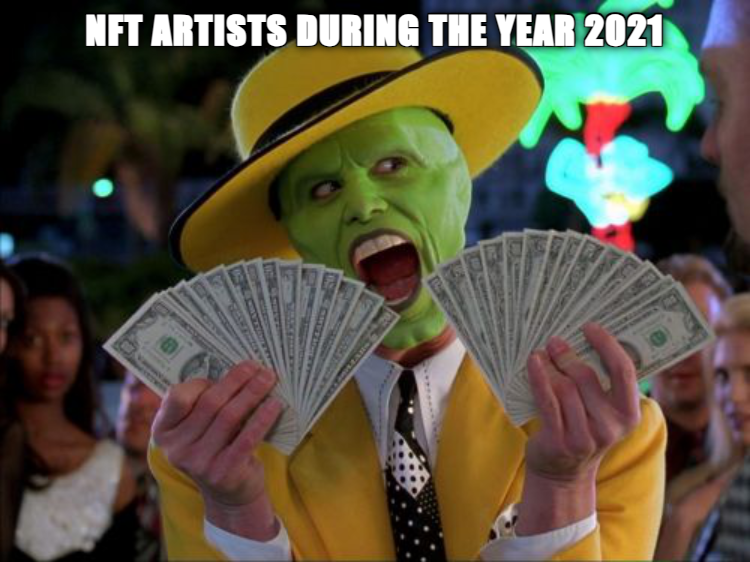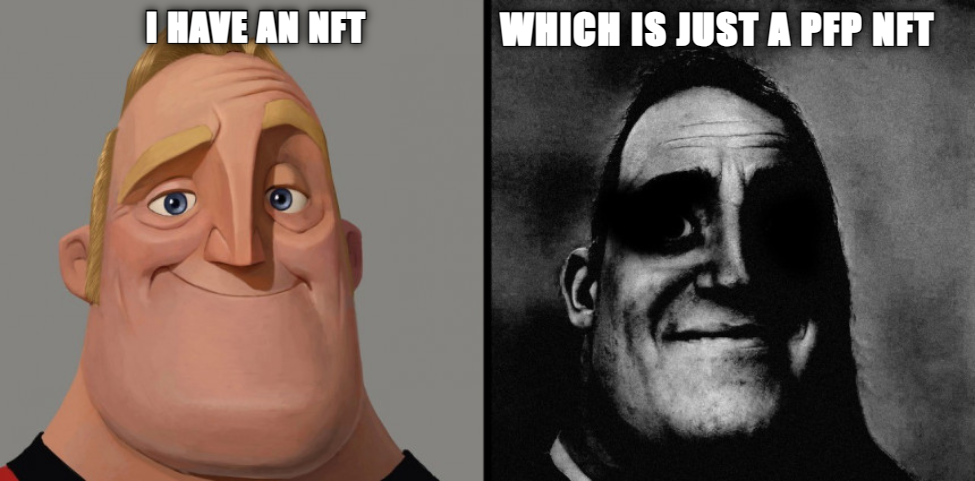The discussion on NFT is still a polarizing one. While some are averted to the fancy idea of investing in some hyped-up digital paintings-- without any apparent utility, others would argue that these paintings are a revolutionary way of breaking free from the centralized authoritative financial system. In 2022, the whole NFT market witnessed a massive fall due to the sudden rise of high-profile scams and hacking. The overall bearish atmosphere led many to conclude that NFTs are finally dead. But on the other side of the spectrum, there are people who still see massive potential in the idea behind NFTs and are hopeful about their comeback. To understand why that might be a possibility, we ought to address a few recent developments and trends in the crypto space. To name a few:
1) NFT Games and P2E (Pay to Earn):
It is undeniable that when it comes to the longevity of any NFT project, utility is one of the main factors to influence. Compared to the PFP projects of questionable utility, NFTs in the Gaming sector are far more stable and promising in terms of their valuation. Before the fusion of video games with Blockchain technology, it was only the competitive professional players and streamers who used gaming as their source of income. But now, the futile act of playing video games has become an efficient way to generate income. Blockchain being the underlying structure of building these games, the monetary activities are primarily supported by the NFTs.
With the advent of games like CryptoKitties and Axie Infinity, NFTs have become more relevant to the gaming communities. Players can now own characters or unique gaming items that exist on-chain and trade them for physical currencies. Gaming items were already valuable and had utility among the gamers. Hence, integrating them as NFTs intuitively pumped up the community. As the number of web3 gamers increases, the trading volume of these gaming NFTs will also increase. Adding on to that, games like Axie Infinity reveal a stream of passive income for the players or collectors of its NFTs. By renting out their Axies through Axie Infinity Scholarships, the owners can generate income without having to do anything. The future of NFTs seems to be linked to the gaming industry.
The global blockchain gaming market is set to explode from $4.6 billion in 2022 to $65.7 billion by 2027. NFT-based gaming assets are a major contributor to the growth of these games. As more and more platforms, including the Google Play Store, are adapting NFTs, the market for NFTs related to gaming is expected to maintain its growth in the coming years.
2) Brand-integrated NFTs:
In the quest for real-world utility of NFTs, the closest you can get is renowned brands launching their NFTs and offering the holders real-world value against those NFTs. Starting from Coachella to NBA, the most progressive US-based brands started scratching the surface of this technology around 2020-21. NFTs not only offer an innovative way of marketing and branding but also allow companies to delve deeper into consumer behavior and build communities loyal to their service or product.
A range of use cases of these brand-integrated NFTs has evolved within the web3 space. McDonald's and Starbucks jumped right into the trend by offering service through their NFT Tokens. Brands similar to Tiffany & Co. introduced NFTs backed up by physical products, which exponentially increased the real-world relevance of NFTs and induced an innovative way of customer service. Nike, on the other hand, had made an empire selling off NFTs of its new collection that has little to no relevance in the tangible realm but has its own value in the metaverse.
NFTs have a subtle nature to indicate exclusivity, and many luxury wine brands took advantage of that. The wine industry and NFTs go hand-in-hand when it comes to differentiating and valuation based on ownership. Based on the concept, the renowned wine brands launched NFTs that gave access to their premium collections.
Brand-associated NFTs and projects have an undeniably high potential. The idea has still not opened to its full potential and yet, it managed to cultivate a strong impact within a very short time. The value of such projects is tied to the associated brands, and hence, is destined to increase in the future.
3) NFTs in the Metaverse:
While analysing the longevity of an NFT project or the stability of its value, we are bound to face the question of utility. With regard to this subject, what does "utility" stand for? Is it limited to the tangible world we face or, can it extend toward a reality that is based on virtual space? Nike's integration of NFTs in its own version of Metaverse provides the most befitting answer to this question.
As Virtual Reality becomes popularized and the applicability of the Metaverse expands, the idea of virtual assets and ownership will become increasingly relevant. NFTs stand to be the most suitable way of claiming ownership, managing assets, and trading assets in the Metaverse. In favour of the topic, Forbes magazine indicated that NFT use cases in the virtual real-estate field are expected to grow in the years to come. Although these "assets" may only exist within the realm of the "virtual" space, their growing significance is closely tied to the increasing importance of our virtual presence. NFTs held against these assets in the Metaverse are projected to gain popularity as society moves towards the digitized space.

4) NFT art Marketplace:
The central idea of NFT is to preserve the uniqueness of an asset. That is where artworks come into the scenario. Apart from the overrated PFP JPEG files, NFTs are the perfect way to preserve ownership, ensure authenticity, and evaluate authentic works of art. The system ensures artists get their fair share from the works they have created. In contrast to traditional marketplaces, marketplaces like OpenSea go easy on creators in terms of both reaching the audience and charging their users.
Through minting their NFTs on web3 marketplaces, creators have more control over their produced art. Every it is resold, the artist gets to collect a certain percentage of the profit. On top of that, the limitations associated with the physicality of an artwork are moved out of the frame. The digital pieces of art stored on-chain can be easily verified and authenticated. Advantages of visual art NFTs imply for all forms of art including music, videos, or gifs. Hence, it is a reasonable conclusion that for collectors and artists, the whole NFT-based artworks and these marketplaces will stay relevant over the coming years.
The Pre and Post Crypto-Crash
2021 was the year when the crypto market, along with NFTs, really went for the moon. With Paris Hilton and Jimmy Falcon hyping up Bored Ape Yatch and Beeple selling NFT worth a whopping $69.3 million, no one expected what was to follow this golden period. Whether you understood NFTs or not, everyone had already adjusted to the fact that they were valuable. Why or exactly what value NFTs held blurred out before the large sum of money weighed against them.

It wasn't until 2022 when the crypto market took a massive hit as FTX crashed and the major players in the space started getting sued. The "flipping NFTs to get rich" bubble burst was an unpleasant experience for the market. Around that time, people actually started questioning what utility their NFTs actually have when flipping isn't the best option. That's when a lot of projects started becoming irrelevant. On top of that, the core idea behind selling artworks as NFTs got derailed when royalties were made an option. The market was already going downhill in 2022, but the added disappointment of creators, and the sentiment of betrayal, aggravated the overall scenario. Even to this day, the NFT sales in Solana and Ethereum are practically dead. The PFP projects' tenure has now run out. As NASDAQ reports- the market has now "matured". Hence, projects having some sort of advantage or association with real-world utility are expected to gain traction.

Conclusion
Since the advent of Blockchain technology, nobody could predicate the reaction that NFTs had on the market during the year 2021. The market for NFTs is said to be defined by its unpredictability and its intractable volatility. However, the events following the year 2021 till now indicate reasonable hostility towards any project that lacks to form a viable and sustainable value generation model. Simply put, projects that cannot explain what use their NFTs have outside the "buy-it-to-sell-it-later" model, are likely to fail. Investing in such projects or any project just for the sake of market hype is an overall bad idea, at the moment.
On the other hand, while the market has been significantly bearish, it does not mean NFTs are dead. There are trends and projects associated with these trends, that offer real value and utility to the holders. The Future of NFTs depends on these projects of actual utility.